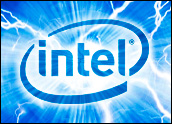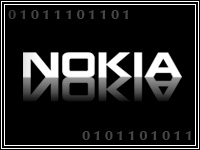
Wednesday’s announcement by the Federal Trade Commission that it is suing Intel over its business practices must have looked like computer-generated deja vu to the technology industry. Those who were around for the Clinton Justice Department’s case against Microsoft in the late 1990s are hearing familiar arguments from both sides — the government claiming a monopolist is using its market share to bully partners and push around competitors, and a corporation claiming a government agency that’s clueless about technology is trying to stifle innovation.
“Intel has engaged in a deliberate campaign to hamstring competitive threats to its monopoly,” said FTC Bureau of Competition Director Richard A. Feinstein. “It’s been running roughshod over the principles of fair play and the laws protecting competition on the merits. The Commission’s action today seeks to remedy the damage that Intel has done to competition, innovation and, ultimately, the American consumer,” he stated.
“The FTC’s action is not based on complaints that Intel violated existing antitrust laws,” countered Intel Senior President/Chief Counsel Doug Melamed during a Wednesday morning conference call with analysts and reporters. “Instead, the FTC is advocating new rules for regulating and micromanaging business conduct that would harm, not help, competition and would cost money in research and development. It will not help the American consumers.”
The FTC’s lawsuit rounds up what it calls a decade’s worth of anticompetitive practices: The government alleges that:
- Intel used a mix of pricing incentives and threats against computer makers like Dell and HP to get them to favor its chips over rivals’ offerings.
- Intel used software tricks to make competitors’ chips look bad in performance tests.
- Intel is using unfair tactics to try to extend its market dominance into the graphics processing units (GPU) market now ruled by Nvidia.
Microsoft All Over Again?
During the conference call’s question-and-answer session, Melamed initially laughed when asked how the government’s case against Intel is different from the Microsoft investigation of the late ’90s.
“There are three fundamental differences,” Melamed answered. “First, the Microsoft case was legally very conservative in terms of legal doctrines. Secondly, the conduct was found to be illegal because [the judges] said it served no legitimate purpose whatsoever,” referring to the bundling of the Internet Explorer Web browser with the Windows operating system.
“The conduct here is pricing competition, it’s innovation, it’s protecting intellectual property rights,” he continued. “Thirdly, the Microsoft case was filed after a thorough investigation by the government. The FTC has not sought discovery by Intel on these new issues [regarding GPUs]. They are relying entirely on little pieces of information they are getting from third parties.”
The suit was filed after weeks of negotiation between the government and Intel regarding a potential settlement. However, Intel could not agree to what Melamed said was an “overreaching” set of demands on pricing.
“They’re basically asking for restrictions on volume discounts, on treating big customers who contribute more to the distribution of our products better than smaller customers, on bundled discounts, on product innovation, on pricing designed to encourage sales and new distribution channels, on compulsory licensing on our intellectual property and restrictions on enforcing intellectual property rights,” he said.
New Tech Trends = New Legal Battle Lines?
Intel has settled pricing complaints with its primary competitor, Advanced Micro Devices, but that doesn’t mean the government can’t use those same complaints in its case, said Tom Halfhill with In-Stat’s Microprocessor Report.
However, Intel needs to make sure AMD stays in business, Halfhill maintained, so that it can extend its reach into GPUs. “Even if AMD only has 10 or 20 percent market share, it’s enough to keep Intel from being a monopoly, and Intel could then get into GPUs,” Halfhill told the E-Commerce Times.
Complaints about Intel’s business practices have indeed surfaced occasionally since the glory “Win-tel” days of the mid to late ’90s, Halfhill said. “It’s kind of like football; it’s hard to draw the line between aggressive, smashmouth football and just plain dirty football. It’s the same in business. Intel is trying to get into the smartphone processors and graphics processors. They need to get moving in both of those areas because desktop PCs are becoming kind of passe. They’re not the cutting edge anymore. The cutting edge is now the smartphone, the next generation of personal computing. That’s where the growth and volume is.”
Those rapidly moving technology trends have also historically worked against government regulators when they’ve tried to bring cases against companies, according to Suresh Kotha, a professor at the University of Washington’s Foster School of Business. There are definite similarities with the Microsoft antitrust case in this situation, Kotha said.
“The question is, where do they (the government) draw the line? If you can show that the consumers benefited from lower prices, then they don’t mind what Intel is doing. But if the company is appropriating most of the gains and not passing it along to the consumer, then you have a problem,” Kotha told the E-Commerce Times.
Intel may be able to make that point in a court of law, but it also takes a risk by focusing a lot of money and energy on legal battles. “Look at all the time and effort that top management at Microsoft spent on that case,” Kotha said. “All of this takes management’s time away from what they should be focusing on in these kinds of industries, and that’s the next new innovation.”























































Social Media
See all Social Media